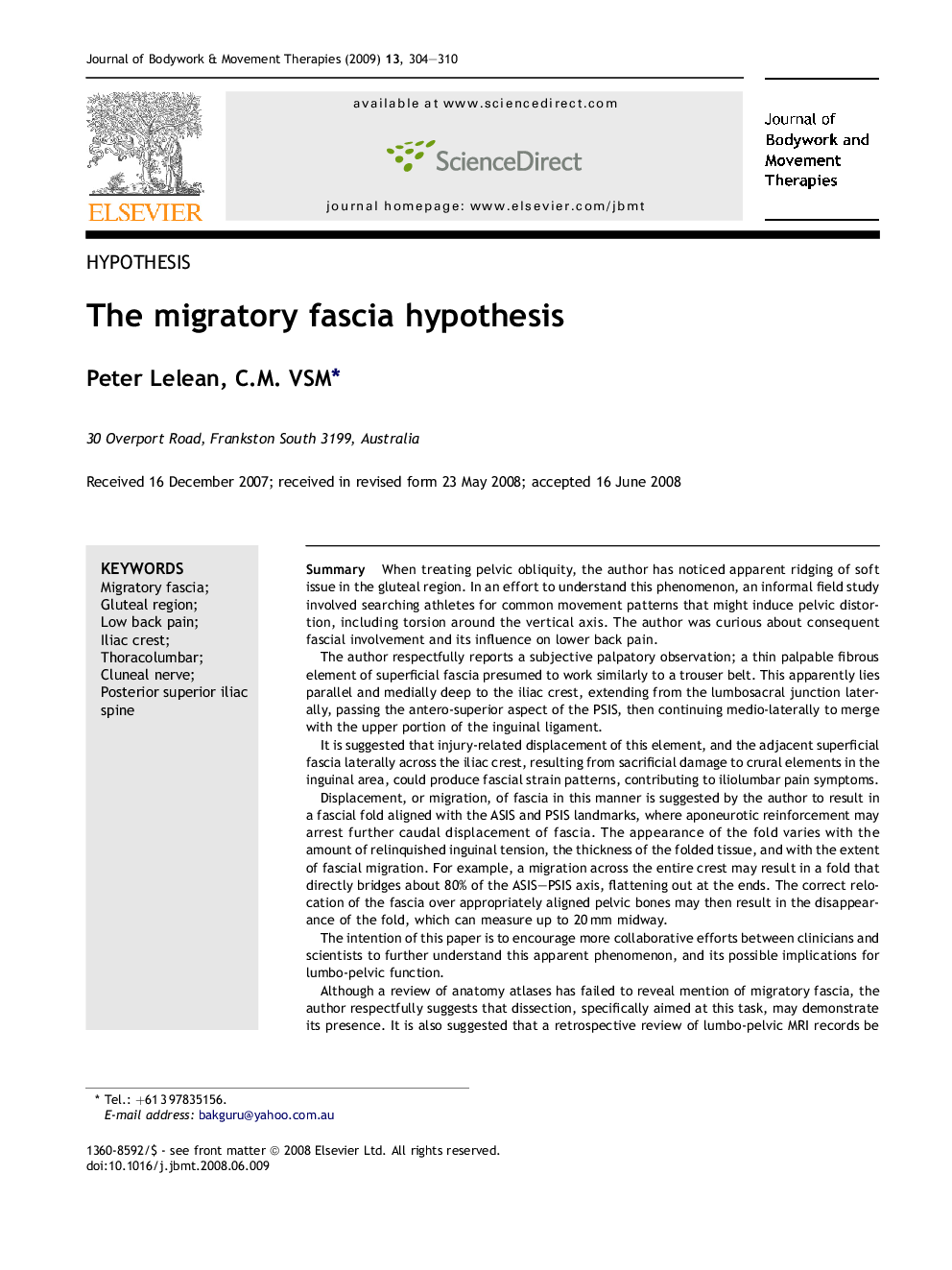| Article ID | Journal | Published Year | Pages | File Type |
|---|---|---|---|---|
| 2618831 | Journal of Bodywork and Movement Therapies | 2009 | 7 Pages |
SummaryWhen treating pelvic obliquity, the author has noticed apparent ridging of soft issue in the gluteal region. In an effort to understand this phenomenon, an informal field study involved searching athletes for common movement patterns that might induce pelvic distortion, including torsion around the vertical axis. The author was curious about consequent fascial involvement and its influence on lower back pain.The author respectfully reports a subjective palpatory observation; a thin palpable fibrous element of superficial fascia presumed to work similarly to a trouser belt. This apparently lies parallel and medially deep to the iliac crest, extending from the lumbosacral junction laterally, passing the antero-superior aspect of the PSIS, then continuing medio-laterally to merge with the upper portion of the inguinal ligament.It is suggested that injury-related displacement of this element, and the adjacent superficial fascia laterally across the iliac crest, resulting from sacrificial damage to crural elements in the inguinal area, could produce fascial strain patterns, contributing to iliolumbar pain symptoms.Displacement, or migration, of fascia in this manner is suggested by the author to result in a fascial fold aligned with the ASIS and PSIS landmarks, where aponeurotic reinforcement may arrest further caudal displacement of fascia. The appearance of the fold varies with the amount of relinquished inguinal tension, the thickness of the folded tissue, and with the extent of fascial migration. For example, a migration across the entire crest may result in a fold that directly bridges about 80% of the ASIS–PSIS axis, flattening out at the ends. The correct relocation of the fascia over appropriately aligned pelvic bones may then result in the disappearance of the fold, which can measure up to 20 mm midway.The intention of this paper is to encourage more collaborative efforts between clinicians and scientists to further understand this apparent phenomenon, and its possible implications for lumbo-pelvic function.Although a review of anatomy atlases has failed to reveal mention of migratory fascia, the author respectfully suggests that dissection, specifically aimed at this task, may demonstrate its presence. It is also suggested that a retrospective review of lumbo-pelvic MRI records be initiated to identify the presence of this proposed fascial feature in the general population. Finally, magnetic resonance elastography may be useful in defining areas of increased muscular tension, in order to test the migratory fascia hypothesis.
